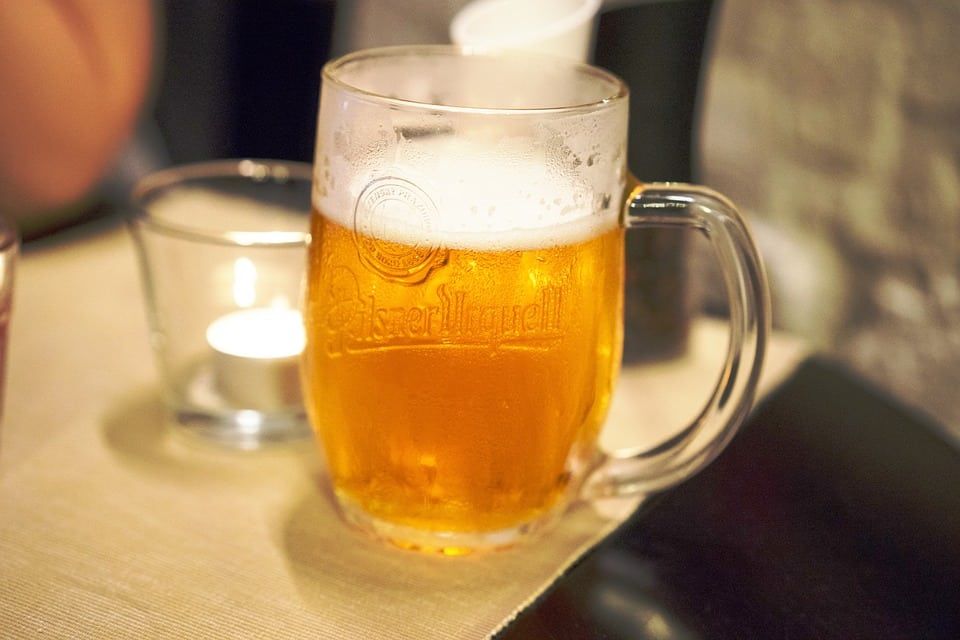
Brexit could have been avoided – if only we shared a beer or two with our continental cousins, archaeologists suggested.
A steady supply of beer made an ancient Peruvian empire last 500 years – a lesson the European Union could use.
The Wari empire lasted from 600 to 1100 AD before eventually giving rise to the Inca – a long time for an empire to remain intact.
But a plentiful supply of the amber nectar was the lubricant that held together a diverse groups of people living in the vast territory for so long.
The implications on how shared identity and cultural practices help to stabilise societies are increasingly relevant today, researchers at The Field Museum of Natural History in Chicago suggested.
Without these ties, large political entities begin to fragment and break up such as the EU and Brexit.
Lead author Associate Curator and Head of Anthropology Dr Ryan Williams said: “This study helps us understand how beer fed the creation of complex political organisations.
“We were able to apply new technologies to capture information about how ancient beer was produced and what it meant to societies in the past.
“We think these institutions of brewing and then serving the beer really formed a unity among these populations, it kept people together.
“This research is important because it helps us understand how institutions create the binds that tie together people from very diverse constituencies and very different backgrounds.
“Without them, large political entities begin to fragment and break up into much smaller things.
“Brexit is an example of this fragmentation in the European Union today.
“We need to understand the social constructs that underpin these unifying features if we want to be able to maintain political unity in society.”
The findings were based on the discovery of an ancient Wari brewery in the mountains of southern Peru 20 years ago.
Using lasers on ceramic ceremonial beer mugs they were able to determine the ingredients that went into the brew.
They then worked with Peruvian brewers to make the concoction called chicha – a light frothy sour brew.
Dr Williams explained their hypothesise was based the brewery found at Cerro Baúl.
He said: “It was like a microbrewery in some respects. It was a production house, but the brewhouses and taverns would have been right next door.”
Because it only lasted for about a week it was not “exported” so people came to festivals at Cerro Baúl to drink it.
He added these festivals were important to Wari society as between one and two hundred local political elites would attend, and they would drink chicha from three-foot-tall ceramic vessels decorated to look like Wari gods and leaders.
Dr Williams said: “People would have come into this site, in these festive moments, in order to recreate and reaffirm their affiliation with these Wari lords and maybe bring tribute and pledge loyalty to the Wari state.”
The study analysed pieces of ceramic beer vessel using several techniques, including one that involved shooting a laser at a shard of a beer vessel to remove a tiny bit of material.
This was then heating that dust to the temperature of the surface of the sun to break down the molecules that make it up.
From that they could tell exactly where the clay came from and what the beer was made of.
Dr Williams add: “The cool thing about this study is that we’re getting down to the atomic level.
“We’re counting atoms in the pores of the ceramics or trying to reconstruct and count the masses of molecules that were in the original drink from a thousand years ago that got embedded into the empty spaces between grains of clay in the ceramic vessels, and that’s what’s telling us the new information about what the beer was made of and where the ceramic vessels were produced.
“It’s really new information at the molecular level that is giving archaeologists this new insight into the past.”
They then teamed up with Peruvian brewers to recreate the brewing process.
Adjunct curator Donna Nash and professor at the University of North Carolina Greensboro said: “Making chicha is a complicated process that requires experience and expertise.
“The experiments taught us a lot about what making chicha would look like in the ruins of a building and how much labor and time went into the process.”
By looking at the chemical makeup of traces of beer left in the vessels and the clay vessels they found the clay was local and the beer was made of pepper berries, an ingredient that can grow even during a drought.
Both these things would help make for a steady beer supply, even if a drought made it hard to grow other chicha ingredients like corn, or if changes in trade made it hard to get clay from far away.
Vessels of pepper berry chicha would always be on tap to keep Wari society stable.
Dr Williams said: “We think these institutions of brewing and then serving the beer really formed a unity among these populations, it kept people together.”
The study was published in the journal Sustainability.
https://www.thelondoneconomic.com/opinion/%EF%BB%BFjust-let-cersei-lannister-sort-out-brexit/17/04/